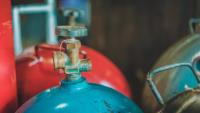 Add My Company
Add My Company
Sign In
HOW TO: SAFELY TRANSPORT GAS CYLINDERS
08-06-2020

Ensuring that you transport gas cylinders in a safe and responsible manner is essential to the safety and welfare of your employees and the general public. Gas cylinders need to be respected as they can be extremely dangerous if they aren’t transported with the utmost care, so understanding the steps you need to take in order to safely move these products is vital.
Read on to find out more about the laws surrounding transporting gas cylinders and how gas cylinders should be transported for both domestic and commercial use.
Laws Surrounding Transporting Gas Cylinders
The Carriage of Dangerous Goods Regulations (ADR) 2009 place a statutory requirement on all employers to protect everyone who is either directly involved with, or who may become involved with (e.g. members of the public), the carriage of dangerous goods by road.
This legislation covers all goods considered dangerous by the ADR, which includes transporting gas cylinders in vehicles.
It’s worth noting that these regulations do not apply in the following scenarios:
When private individuals carry dangerous goods, which are packaged for retail sale and intended solely for personal use
When dangerous goods are carried only incidentally to the main enterprise’s main activity (e.g. a plumber carrying propane gas bottles on his way to a job)
Despite these exemptions, Gas Safe still recommends that any organisation transporting dangerous goods, such as butane gas bottles, follows the basic legal safety regulations within ADR, which include:
Driver training
Vehicle ventilation
Safety Equipment
Basic safety training (with gases)
You should always ensure that you comply with the following points too:
Never allow anyone to smoke in, or near to, any vehicle that is being used to transport gas bottles
Never carry more than 333kg of gas without an ADR license
Do not operate any sources of ignition near the gas bottles, this includes lanterns and cigarette lighters, among other things
Do not carry any unnecessary passengers whilst transporting gas cylinders
If at any point you smell gas whilst transporting bottles for either commercial or domestic use, immediately pull over in a safe place, stop the engine and do not move the vehicle until the source of the leak has been found and the vehicle has been declared safe by a competent person.
If you are unable to find the source of the leak, call a competent person immediately, maximise ventilation by fully opening all doors, windows and vents where possible and be sure not to turn on any electrical equipment.
It’s also worth noting that these guidelines apply to a whole host of dangerous products, such as transporting oxygen cylinders, and are in accordance with LPG transport regulations.
For more information on HOW TO: SAFELY TRANSPORT GAS CYLINDERS talk to Adams Gas
Enquire Now
List your company on FindTheNeedle.

